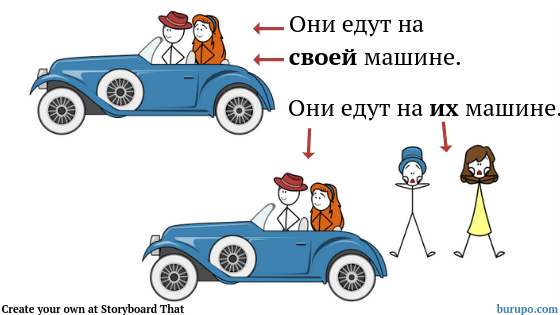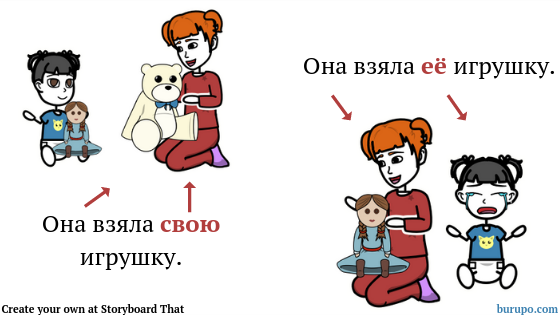Grammar (Possessive pronoun "свой")
СРАВНИТЕ! COMPARE!
Это я. А это моя подруга. Я люблю свою подругу. It's me. And this is my friend. I love my friend.
Это она. А это её мама. Она пришла со своей мамой. That's she. And this is her mother. She came with her mom.
Это мы. А это наши друзья. Мы пригласили в гости своих друзей. This is us. And these are our friends. We invited our friends to visit.
СВОЙ (masculine)


When talking about a 3d person:
– use the general possessive pronoun if you refer the other person,
– use the pronoun свой if your refer to the subject of the sentence.
Она взяла́ свою́ су́мку.
She took her (own) bag.
Она́ взяла́ её су́мку.
She took her (someone else’s) bag.
Talking about 1st or 2d person you can use either possessive or reflexive pronoun:
Дай мне твой но́мер телефо́на. / Дай мне свой но́мер телефо́на.
Give me your phone number.
Я сде́лала ремо́нт в свое́й ко́мнате. / Я сде́лала ремо́нт в мое́й ко́мнате.
I renovated my room.
